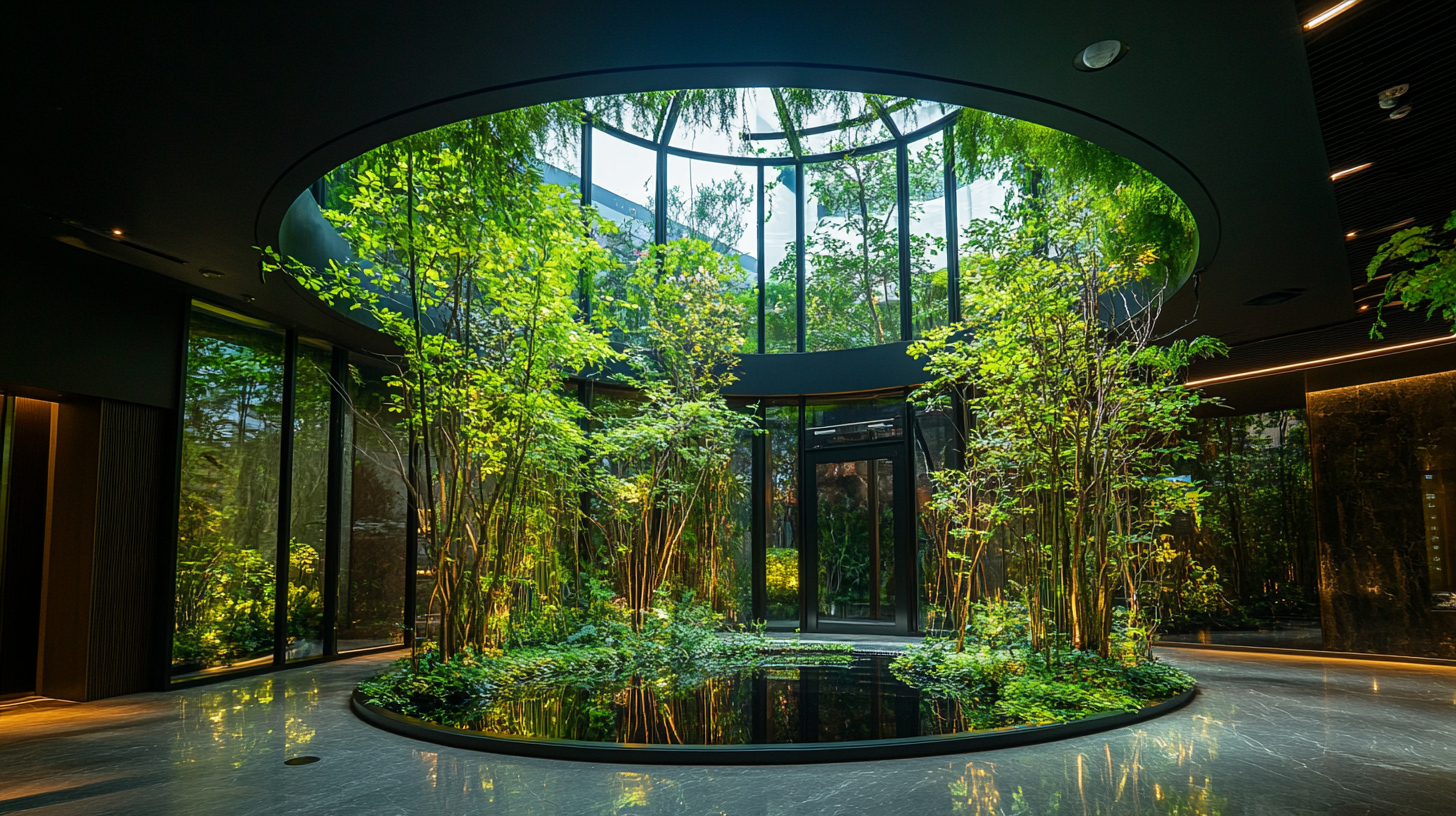
In recent years, the global LED lighting market has witnessed exponential growth, driven by increasing energy efficiency demands and environmental concerns. According to a report by MarketsandMarkets, the global LED lighting market is projected to reach USD 105.92 billion by 2026, growing at a CAGR of 13.2% from 2021 to 2026. This surge highlights the critical need for innovative sourcing strategies that can support the expansion and sustainability of LED lighting solutions. As companies strive to enhance their competitive edge, effective global sourcing becomes paramount, enabling access to cutting-edge technologies and cost efficiencies.
Moreover, a shift towards smart lighting solutions and IoT integration is reshaping the landscape of LED lighting globally. Research by Grand View Research indicates that the smart lighting segment alone is expected to grow at a remarkable CAGR of over 24% from 2021 to 2028. This trend underscores the importance of exploring innovative approaches to sourcing, ensuring that manufacturers are not only meeting current market demands but also anticipating future requirements. Embracing a strategic global sourcing framework will play a pivotal role in driving advancements in LED lighting technology and fulfilling the evolving expectations of consumers and businesses alike.

The LED lighting industry is experiencing transformative changes as highlighted in TrendForce's latest report on the 2025 Global LED Lighting Market Trend and Player Strategies. According to the report, the LED general lighting market is projected to witness significant growth, reaching a value of approximately $60 billion by 2024. This surge is attributed to a variety of factors, including increased energy efficiency, advancements in LED technology, and growing environmental awareness among consumers. Emerging trends within the LED lighting sector showcase the integration of smart technologies and IoT capabilities, which are driving innovation in product offerings. As smart homes and cities become more prevalent, there is a notable increase in demand for LED lighting solutions that can be easily controlled and integrated with other smart devices. Furthermore, the development of tunable white lighting and color-changing options is enhancing the versatility of LED products, catering to various consumer preferences and applications. On a global scale, the impact of these advancements is reshaping the competitive landscape of the LED market. Key players are adopting strategic partnerships and focusing on sustainable practices to stay ahead. Additionally, the report emphasizes the growing importance of regional markets in driving the adoption of LED technologies, particularly in Asia-Pacific, where urbanization and government initiatives towards energy-efficient solutions are accelerating market penetration. As we move towards 2025, these trends will continue to influence sourcing strategies and the overall direction of the LED lighting industry.

As the demand for environmentally friendly solutions grows, the significance of sustainable sourcing strategies in the LED lighting industry cannot be overstated. According to a report from the International Energy Agency (IEA), LED lighting could account for up to 70% of global lighting by 2030, emphasizing the need for eco-conscious sourcing practices. Sustainable sourcing not only enhances the environmental profile of LED products but also meets the increasing consumer demand for responsible business practices.
Incorporating sustainability into the sourcing of LED solutions involves evaluating the entire supply chain, from raw materials through to production methods. Research from McKinsey indicates that companies adopting sustainable sourcing can reduce their total costs by up to 10%, demonstrating that eco-friendly practices can also bolster profitability. For instance, using recycled materials in LED products not only minimizes waste but also lowers the carbon footprint associated with manufacturing processes.
Moreover, leveraging renewable energy sources in the production of LED lighting can significantly enhance sustainability. A report by the Global Lighting Association highlights that LED lamps made with renewable energy can reduce greenhouse gas emissions by an impressive 30% compared to traditional manufacturing methods. This shift not only supports corporate sustainability goals but also aligns with growing regulatory frameworks aimed at reducing carbon emissions across industries. By prioritizing sustainable sourcing strategies, companies in the LED sector can create innovative, eco-friendly products that resonate with both consumers and environmental advocates alike.

In today's rapidly evolving marketplace, leveraging digital platforms for global sourcing of LED lighting solutions is not just a trend; it has become a necessity. Companies are harnessing cutting-edge technologies to streamline their sourcing processes, allowing them to connect with manufacturers and suppliers across the globe. These platforms provide an accessible environment where businesses can explore various options, compare prices, and evaluate product specifications, all while significantly reducing lead times. This digital transformation is key for organizations aiming to stay competitive in a crowded marketplace.
One of the most significant advantages of using digital platforms is the wealth of data available at a company's fingertips. By utilizing advanced analytics and AI tools, businesses can make informed decisions based on real-time market insights. These technologies allow for better demand forecasting and inventory management, minimizing wastage and enhancing operational efficiency. Furthermore, digital platforms often include user reviews and ratings, giving companies the ability to gauge supplier reliability and product quality before any commitment is made. This transparency helps in forging long-term partnerships with trusted suppliers.
Moreover, as sustainability becomes a pressing concern, digital platforms enable businesses to source eco-friendly LED lighting solutions more effectively. Companies can easily find suppliers that prioritize sustainable practices, ensuring their sourcing aligns with corporate social responsibility goals. By integrating these strategies, businesses not only contribute to environmental conservation but also enhance their brand reputation and customer loyalty in an increasingly aware consumer market. Thus, leveraging digital platforms in global LED sourcing emerges as a strategic move towards innovation and efficiency.

The global LED lighting market is on an impressive trajectory, projected to surpass $100 billion by 2025, driven by environmental concerns and the demand for energy efficiency. As companies navigate this rapidly evolving landscape, innovative approaches to sourcing LED lighting solutions become crucial. Collaborative innovations, particularly through strategic partnerships with global suppliers, can significantly enhance product development and market reach.
Partnering with reliable suppliers fosters a dynamic exchange of ideas and resources, allowing for tailored solutions that address regional needs and preferences. For instance, according to a report by MarketsandMarkets, companies that engaged in cooperative sourcing strategies reported a 30% decrease in development costs and a 25% reduction in time to market. This collaborative model not only enhances innovation but also strengthens the supply chain resilience, ensuring a streamlined process from manufacturing to distribution.
Furthermore, organizations that leverage global supplier networks can access the latest technologies and trends in LED lighting. This is vital in a sector where advancements in energy efficiency and smart technologies, like IoT integration, are reshaping consumer expectations. The 2023 Global Lighting Report highlights that nearly 60% of consumers prioritize energy-efficient products, underscoring the need for manufacturers to stay ahead by partnering with experts who can provide cutting-edge solutions. Through these collaborative efforts, businesses can drive innovation while aligning their offerings with the growing demand for sustainable lighting options.
Navigating the regulatory landscape is one of the most critical aspects of global sourcing, especially for industries such as LED lighting solutions that are experiencing rapid growth. Companies seeking to source LED products internationally must contend with a myriad of regulations that vary significantly from one region to another. Compliance with these regulations is essential not only for legal adherence but also for ensuring product safety, quality, and market acceptance.
Each country has its own set of environmental standards, safety certifications, and energy efficiency requirements that impact LED products. For instance, the European Union has stringent CE marking guidelines, while the United States adheres to the Department of Energy's regulations. This disparity in requirements can pose challenges for companies trying to streamline their sourcing processes. It necessitates thorough research and often requires hiring local experts to navigate the complexities of foreign regulations effectively.
Additionally, understanding tariffs, trade agreements, and import/export restrictions is vital for cost management in global sourcing. Recent geopolitical shifts and supply chain disruptions have made it essential for companies to be proactive in monitoring changes in trade policies, ensuring they can adapt their sourcing strategies quickly. By leveraging innovative sourcing solutions and compliance technologies, businesses can significantly mitigate risks and overcome the regulatory hurdles associated with international LED lighting sourcing, enabling them to capitalize on this booming market.
Let us help you get started with our superior LED lighting products.
Get all the latest news from BrightLED.
Copyright © Bright LED. All rights reserved.
STAY CONNECTED

